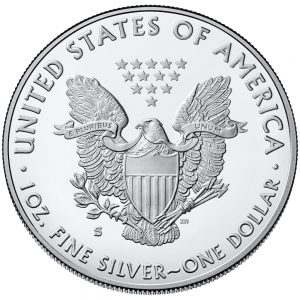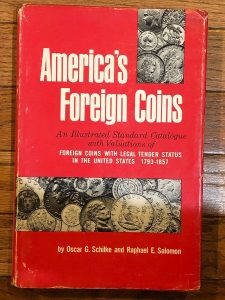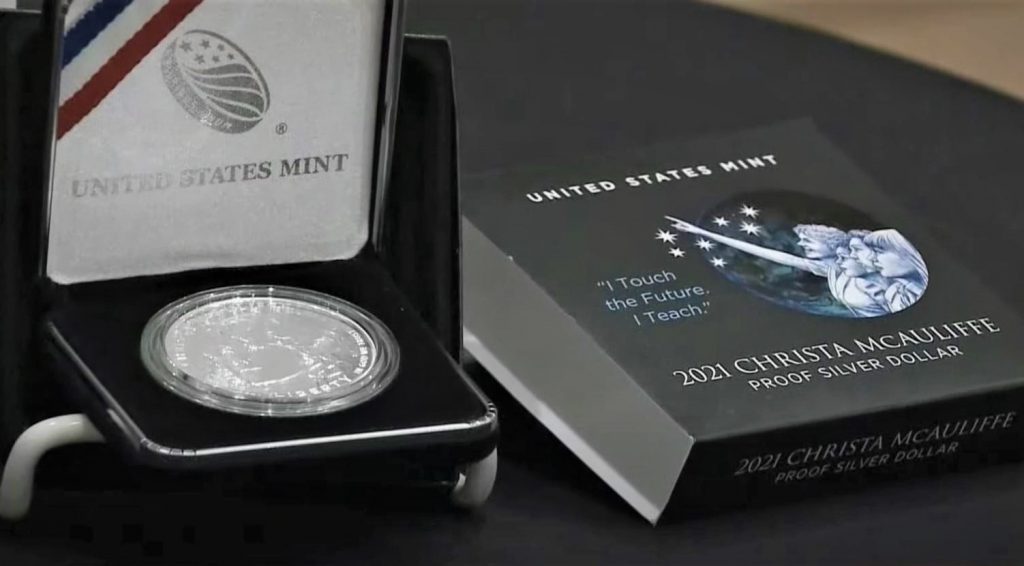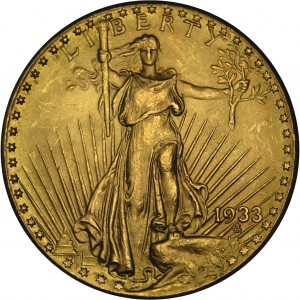Weekly World Numismatic News for May 1, 2022
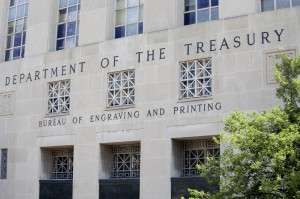 The Bureau of Engraving and Printing announced that they negotiated a transfer of land from the U.S. Department of Agriculture to build a new facility in the Maryland suburbs of Washington, D.C.
The Bureau of Engraving and Printing announced that they negotiated a transfer of land from the U.S. Department of Agriculture to build a new facility in the Maryland suburbs of Washington, D.C.
The USDA will transfer the 104-acre Beltsville Agricultural Research Center northwest of the Capital Beltway for the new printing facility. The BEP plans to begin construction in 2023 and complete the facility by 2027. The new printing facility will employ at least 850 people.
The BEP used to be the security printer for the United States government. The BEP printed security documents, including bonds and deed certificates, and stamps, other than printing currency.
Legally, the primary mission of the BEP is to print currency for the Federal Reserve. They would offer other printing services as long as they continued to supply the Fed with currency. Beginning in the 1970s, the BEP reduced the number of stamps they printed until ending stamp printing in the early 1990s. When the Treasury ended the Series E savings bond program, they contracted printing to other contractors.
The economic expansion of the 1980s led the BEP to end almost all security printing to print currency. Before opening the Fort Worth printing center in 1991, Treasury officials explored using commercial printers to supplement the BEP’s capabilities.
In 2022, the Federal Reserve ordered the printing of over 6.9 billion notes. Although this is less than last year’s order, the BEP is approaching its maximum capacity between the Washington and Fort Worth sites. And even though bonds and stamps have become electronic assets, the U.S. government still has a security printing requirement. Although a source at the BEP would not elaborate on the printing requirement, they said that government officials want to make security printing a government function.
And now the news…
 → Read more at nbcwashington.com
→ Read more at nbcwashington.com
 → Read more at the-sun.com
→ Read more at the-sun.com
Weekly World Numismatic News for March 28, 2021
There are many answers to that question. Some will point to price guides. Others will argue that one price guide is better than others. Then some people will deliver a dissertation about supply and demand and the commodity price of the metals to explain their answer.
The price of a coin is whatever the price one person will pay.
In an auction, people will bid until the price exceeds what all but one participant will pay.
This past week, Heritage Auctions sold a 1935 George V silver Pattern “Waitangi” Crown sold for $72,000, a New Zealand coin record.
In Las Vegas, Stack’s Bowers Galleries sold the only privately owned 1822 Half Eagle for $8.4 million. The other two examples are in the Smithsonian Museum. It is the second-highest amount ever paid for a U.S. coin.
These sales come the week after a George VIII Gold Crown sold for £1 million, a record price for a British coin.
Back down to earth, those who were shut out of the 2010-W American Silver Eagle sale are finding the secondary market selling these coins for upward of $150, double their sale price. Collectors trying to maintain complete collections are paying these markups.
Over a year after the coronavirus pandemic shut down the country, there seems to pent-up demand by collectors. All types of numismatic auctions, except scripophily, are experiencing extraordinary realized prices from auctions.
The strong demand is bringing people out of the woodwork trying to cash in. Major auction houses are lowering their commission to attract new sellers of high-end merchandise. Medium-sized auction houses have been contacting collectors looking to sell smaller collections usually left to estate and liquidation auction services.
Collectors are paying higher prices for coins. A recent liquidation auction, an ungraded 1880-CC Morgan Dollar with many problems, including questionable toning, may be worth about $100 according to the price guides. The coin sold for over $200 with buyer’s premium.
If this is how the market is reacting while contact continues to be limited, imagine how it will be when everything is fully open for business.
And now the news…
 → Read more at counterview.net
→ Read more at counterview.net
 → Read more at azbigmedia.com
→ Read more at azbigmedia.com
 → Read more at reviewjournal.com
→ Read more at reviewjournal.com
 → Read more at jerseyeveningpost.com
→ Read more at jerseyeveningpost.com
 → Read more at nzherald.co.nz
→ Read more at nzherald.co.nz
 → Read more at euroweeklynews.com
→ Read more at euroweeklynews.com
 → Read more at americanlifestylemag.com
→ Read more at americanlifestylemag.com
Weekly World Numismatic News for March 21, 2021
Some noticed that I did not post a Weekly World Numismatic News last week. It is nice to see that so many readers are paying attention. This week, I will combine the news of the last two weeks with some highlights.
We Know Who Owns the ’33 Double Eagle
 The 1933 Saint-Gaudens Double Eagle is arguably the world’s most famous coin. The only coin of its type legal to own sold for $7,590,020 in a Sotheby/Stack’s auction to an anonymous buyer in 2002. We learned that the owner is shoe designer Stuart Weitzman and will be selling the coin along with two extremely rare stamps at an exclusive auction. The auction will include a rare plate block of the famous Inverted Jenny stamp, the holy grail for stamp collectors. Sotheby’s is estimating the coin’s value at $10-15 million. I predict it will sell for over $12 million.
The 1933 Saint-Gaudens Double Eagle is arguably the world’s most famous coin. The only coin of its type legal to own sold for $7,590,020 in a Sotheby/Stack’s auction to an anonymous buyer in 2002. We learned that the owner is shoe designer Stuart Weitzman and will be selling the coin along with two extremely rare stamps at an exclusive auction. The auction will include a rare plate block of the famous Inverted Jenny stamp, the holy grail for stamp collectors. Sotheby’s is estimating the coin’s value at $10-15 million. I predict it will sell for over $12 million.
British Coin Sells for £1 Million
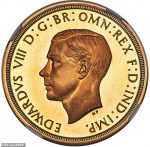 A rare gold coin with the portrait of King Edward VIII sold for £1 million. King Edward VIII was the shortest-serving monarch of the 20th century. He abdicated the throne 11 months after his coronation to marry a twice-divorced American woman. At the time, the British people felt that the divorces and her ex-husbands were living as an insult to the Church of England. Rather than fight the church, Edward gave up the throne. During his reign, the Royal Mint struck only three £5 gold coins and never circulated. The sale makes this coin the most expensive British coin.
A rare gold coin with the portrait of King Edward VIII sold for £1 million. King Edward VIII was the shortest-serving monarch of the 20th century. He abdicated the throne 11 months after his coronation to marry a twice-divorced American woman. At the time, the British people felt that the divorces and her ex-husbands were living as an insult to the Church of England. Rather than fight the church, Edward gave up the throne. During his reign, the Royal Mint struck only three £5 gold coins and never circulated. The sale makes this coin the most expensive British coin.
A Britannia of Color
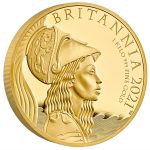 Britannia, the female allegorical symbol of Britain, is depicted on bullion coins as a woman of color. Early in U.S. coin history, Liberty has appeared in ways similar to Britannia. See the image on the Seated Liberty Dollar for an example. Following the United States’ use of a woman of color to represent Liberty, the Royal Mint mint designers produce their own. The new designs are being lauded in the cynical British press for their art and its symbolism. The Royal Mint notes that Anglo-Saxons do not dominate British territories and members of the Commonwealth Realm. It is important to understand that the coin was planned and designed before the Royal Family’s recent controversies.
Britannia, the female allegorical symbol of Britain, is depicted on bullion coins as a woman of color. Early in U.S. coin history, Liberty has appeared in ways similar to Britannia. See the image on the Seated Liberty Dollar for an example. Following the United States’ use of a woman of color to represent Liberty, the Royal Mint mint designers produce their own. The new designs are being lauded in the cynical British press for their art and its symbolism. The Royal Mint notes that Anglo-Saxons do not dominate British territories and members of the Commonwealth Realm. It is important to understand that the coin was planned and designed before the Royal Family’s recent controversies.
U.S. Wins COTY
 In case you missed it, the 2019 Apollo 11 50th Anniversary of the Moon Landing Commemorative five-ounce silver proof coin win the prestigious Coin of the Year competition. World Coin News sponsors the annual competition. Nominations, reviews, and voting are held the year following the coins’ issue. They announce the winner the following year. Aside from winning COTY, the coin won the Best Contemporary Event Coin and Best Silver Coin categories. It is one of the best designs by the U.S. Mint in recent years.
In case you missed it, the 2019 Apollo 11 50th Anniversary of the Moon Landing Commemorative five-ounce silver proof coin win the prestigious Coin of the Year competition. World Coin News sponsors the annual competition. Nominations, reviews, and voting are held the year following the coins’ issue. They announce the winner the following year. Aside from winning COTY, the coin won the Best Contemporary Event Coin and Best Silver Coin categories. It is one of the best designs by the U.S. Mint in recent years.
And now the news…
 → Read more at dailymail.co.uk
→ Read more at dailymail.co.uk
 → Read more at sothebys.com
→ Read more at sothebys.com
 → Read more at thesun.co.uk
→ Read more at thesun.co.uk
 → Read more at theconversation.com
→ Read more at theconversation.com
 → Read more at royalgazette.com
→ Read more at royalgazette.com
 → Read more at vogue.co.uk
→ Read more at vogue.co.uk
 → Read more at goodnewsnetwork.org
→ Read more at goodnewsnetwork.org
 → Read more at i.stuff.co.nz
→ Read more at i.stuff.co.nz
 → Read more at wflanews.iheart.com
→ Read more at wflanews.iheart.com
ANA Library Opens Again
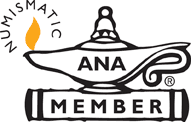 A year after the pandemic shut everything down, the ANA Library is back! ANA members can check out books from the library and have them shipped.
A year after the pandemic shut everything down, the ANA Library is back! ANA members can check out books from the library and have them shipped.
The ANA announced the library’s opening yesterday in their monthly Money Mail. After reading it, I found my notes with the four books I want to consult and submitted a request.
The ANA Library might be the most underused benefit of being an ANA member. The library contains many hard-to-find and expensive books that might be useful for a short time. All you do is pay for the shipping in both directions, and the entire world of numismatics is delivered to your mailbox.
Books are an excellent resource for information that is no longer in the mainstream. For example, I developed an interest in foreign coins used as legal tender in the United States and the foreign coins struck by the U.S. Mint. There are a few resources, and they are challenging to find. None of the books are available in digital format.
Since the start of the pandemic, I have been on a book buying spree. References books that I wanted to borrow from the ANA were purchased and added to my growing library. The expansion of my numismatic library has forced me to downsize my old techie books. Numismatic books are more fun.Having a ready library of references helps satisfy my curiosity. A few of the books have references to scanned books and articles found online at both the Newman Numismatic Portal and the Government Printing Office. These resources help in providing background to my reading.
Having access to the digitized editions of the Numismatist also helps. ANA members can access the complete library of the Numismatist via their website or a smartphone app. It has been common to have the app open on my iPad while staring into the computer screen reading another resource.
Since all of the Numismatists are available online, I will be finding new homes for the paper copies taking up valuable shelf space.
First Lady Honors Christa McAuliffe
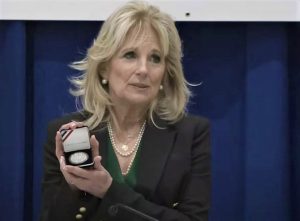 The United States Mint released the Christa McAuliffe Proof Silver Dollar in a socially distanced ceremony where they presented the first coin to First Lady Dr. Jill Biden, honoring her lifelong dedication to teaching.
The United States Mint released the Christa McAuliffe Proof Silver Dollar in a socially distanced ceremony where they presented the first coin to First Lady Dr. Jill Biden, honoring her lifelong dedication to teaching.
NASA selected Christa McAuliffe to be the first member of the Teacher in Space Program. The space agency would train teachers to travel to space and hold lessons from the space shuttle. Unfortunately, 73 seconds into the flight, the Space Shuttle Challenger disintegrated, killing all seven members aboard.
Jill Biden began her education career as a substitute teacher in 1975. She went to school part-time to earn her Master of Education, completing her coursework while pregnant with her daughter Ashley. After a few years, Biden returned to the classroom teaching English in a public high school. In January 2007, at age 55, she earned a Doctor of Education (Ed.D.) before hitting the campaign trail for the Obama-Biden ticket.
Dr. Biden is a champion for education and plans to teach again this fall.
During the issuing ceremony, Biden said:
The coin’s sale price includes a $10 surcharge paid to the FIRST® (For Inspiration and Recognition of Science and Technology) robotics program to promote leadership in science, technology, engineering, and mathematics (STEM).
Who is Stuart Weitzman
Weitzman continued to design shoes with unique designs and materials not used before. He was creating one-of-a-kind designs for stars to wear on the red carpet. Top stars and models consider Stuard Weitzman shoes the must-have accessory to any designer outfit.
Weitzman collected stamps as a child. As he collected, Weitzman became fascinated with very rare stamps. Although his collection is modest in size, it consists of two rarest stamps, the only surviving British Guiana One-Cent Magenta stamp and the 1918 24-Cent Inverted Jenny Plate Block stamps. Sotheby’s will be selling both stamps in an auction on June 8, 2021.
As part of the auction announcement, Sotheby’s revealed that Weitzman was also selling the only 1933 Saint Gaudens Double Eagle gold coin that is legal to own. It is the first time the identity of the coin’s owner is publicly known.
Stuart Weitzman was the winning bidder of the Sotheby/Stack’s auction held on July 30, 2002, held at the Sotheby’s headquarters in New York City. When the hammer fell, Weitzman anonymously purchased the coin for $6.6 million plus a 15-percent buyer’s premium. Sotheby’s famously paid the $20 face value to the U.S. Mint to monetize the coin. The final sale price was $7,590,020. At the time, it was almost twice the previous record paid for a coin.
Although there are other one-of-a-kind coins, none have the same story as the 1933 Farouk-Fenton Double Eagle. It is a unique story that could only be born out of the circumstances of the Great Depression and the documented corruption at the Philadelphia Mint.
The coin and stamps will be on public view by appointment at Sotheby’s in New York until March 17 and June 5-7.
The Double Eagle and British Guiana stamp carries a pre-auction estimate of $10-15 million. The Inverted Jenny is estimated to be worth $5-7 million.
I expect the sale of the coin will break the record for the price of a single coin. The coin is likely to sell for more than $12 million, including the buyer’s premium.
Auction preview video courtesy of Sotheby’s
